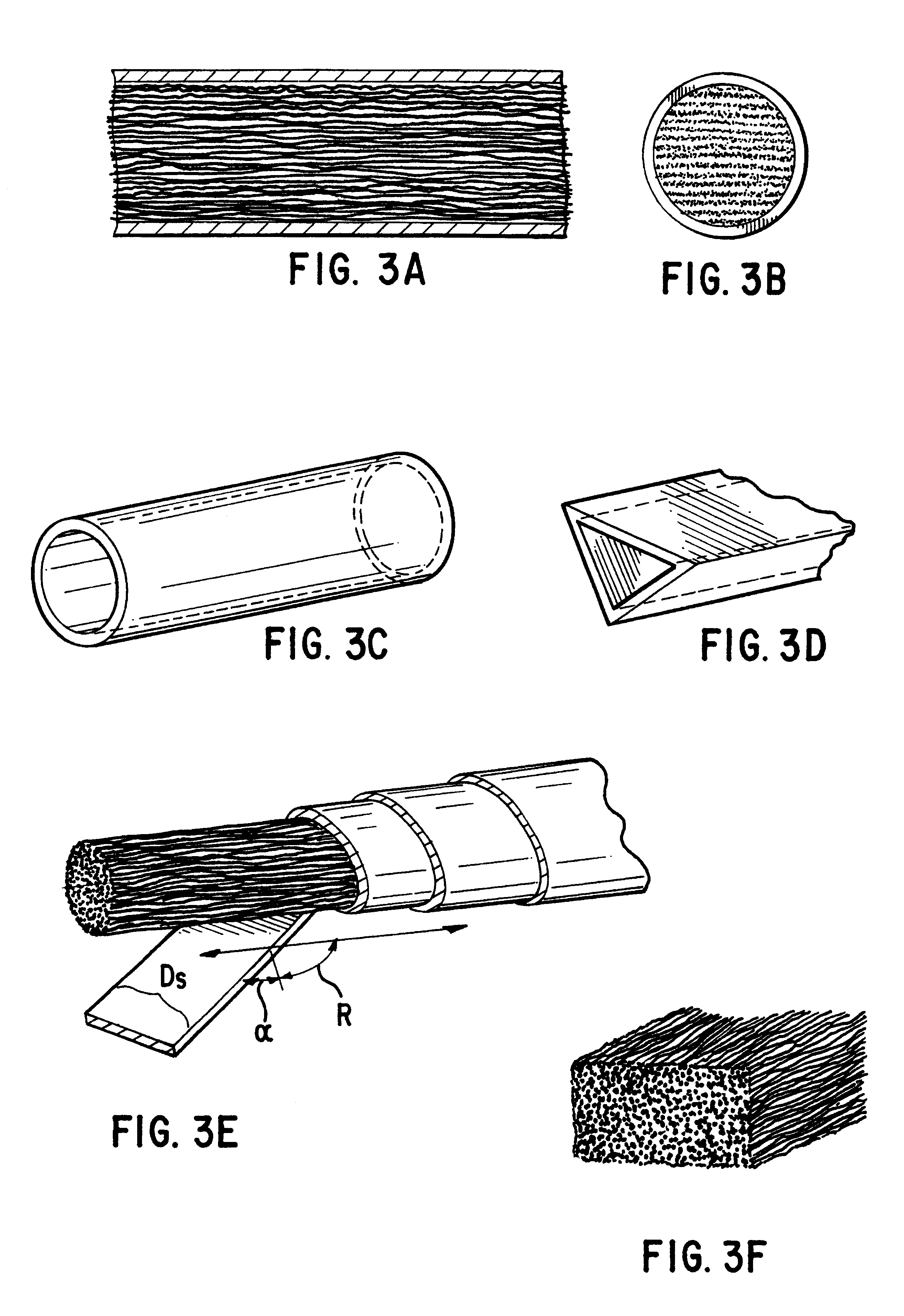Continuous metal fiber brushes
a technology of fiber brushes and fibers, applied in the field offiber brushes, can solve the problems of shortening the service interval, reducing the service life of brushes, and reducing the heat dissipation
- Summary
- Abstract
- Description
- Claims
- Application Information
AI Technical Summary
Benefits of technology
Problems solved by technology
Method used
Image
Examples
Embodiment Construction
a. General Considerations
The previous metal fiber brushes suffered from the following problems;
difficulty of manufacture
limitations on the achievable relationship between macroscopic brush stiffness and microscopic fiber compliance
problems associated with the necessity of using a removable constituent during manufacturing
limitations on the types of metals usable as conductors in the brushes on account of the need for differential etchability or dissolution of the matrix material.
The ideal, therefore, are fibers assembled into the form of rods (brush-stock), typically but not necessarily straight and of constant cross section, which locally leave the fibers within them individually flexible such that the properties at the interface to the conducting surface do not change if run end-on even for long periods of time so as to cause considerable wear.
b. General Characteristics of Brush Stock
The most important feature of fiber brushes is that at any one moment a large number of fibers, el...
PUM
| Property | Measurement | Unit |
|---|---|---|
| Fraction | aaaaa | aaaaa |
| Fraction | aaaaa | aaaaa |
| Fraction | aaaaa | aaaaa |
Abstract
Description
Claims
Application Information
 Login to View More
Login to View More - R&D
- Intellectual Property
- Life Sciences
- Materials
- Tech Scout
- Unparalleled Data Quality
- Higher Quality Content
- 60% Fewer Hallucinations
Browse by: Latest US Patents, China's latest patents, Technical Efficacy Thesaurus, Application Domain, Technology Topic, Popular Technical Reports.
© 2025 PatSnap. All rights reserved.Legal|Privacy policy|Modern Slavery Act Transparency Statement|Sitemap|About US| Contact US: help@patsnap.com



